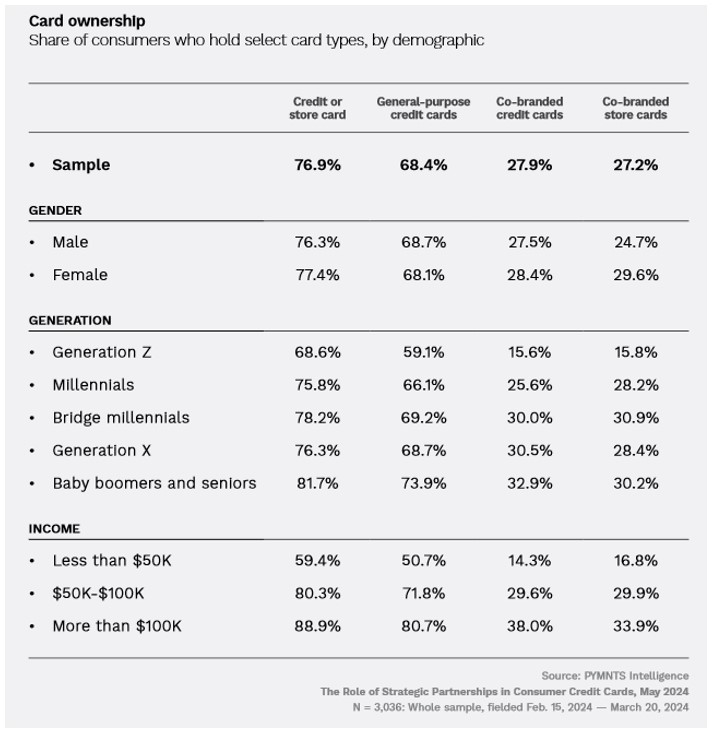
PYMNTS Intelligence finds that 2.5 times as many consumers possess a general-use credit card than own a co-branded credit or store card.
Yet, because 27% of all U.S. consumers also have these more specialized cards, we wanted to take a closer look at their popularity. We surveyed more than 3,800 U.S. consumers to find out how and when they used co-branded credit and store cards and shared our findings in “The Role of Strategic Partnerships in Consumer Credit Cards,” a collaboration with Elan.
General-use cards and co-branded cards aren’t that far apart in their functionality. Both can be used anywhere that participates in the issuing card’s network. The key visual difference between the two is that a co-branded credit card prominently features a company’s logo and brand name alongside that of the card network. Store cards, meanwhile, display only the merchant’s branding and can only be used with that merchant.
The average U.S. consumer has nearly three cards in their possession, and 77% have some form of credit or store card. As the chart illustrates, however, the type of card consumers prefer varies substantially across income brackets and age groups. In fact, PYMNTS Intelligence finds that income plays the most significant role in determining who carries what.
Thirty-eight percent of consumers earning more than $100,000 a year have a co-branded credit card, and 34% have a co-branded store card, compared to just 14% and 17%, respectively, for those annually earning less than $50,000. Approximately 30% of those earning between $50,000 and $100,000 own co-branded and store cards.

Co-branded cards are most popular among older consumers, though this tracks with higher rates of overall card ownership. For example, 33% of baby boomers and seniors hold co-branded credit cards while only 26% of millennials do. Generation Z consumers, meanwhile, show little interest in the more specialized card types: While 16% hold a co-branded credit card and the same share have co-branded store cards, 59% of them have general-purpose credit cards.
Perhaps unsurprisingly, general-purpose credit cards tend to be the go-to option for consumers who hold both general-purpose and co-branded cards. This suggests consumers may perceive there are more benefits that come from using general-purpose credit cards, highlighting a critical opportunity that co-branded and store card providers should address.
Many consumers — particularly those who are younger and those with lower incomes — may simply not associate co-branded or store cards with perks and rewards. To attract and retain more cardholders, co-branded and store card issuers should focus on building consumer awareness about their cards’ benefits.